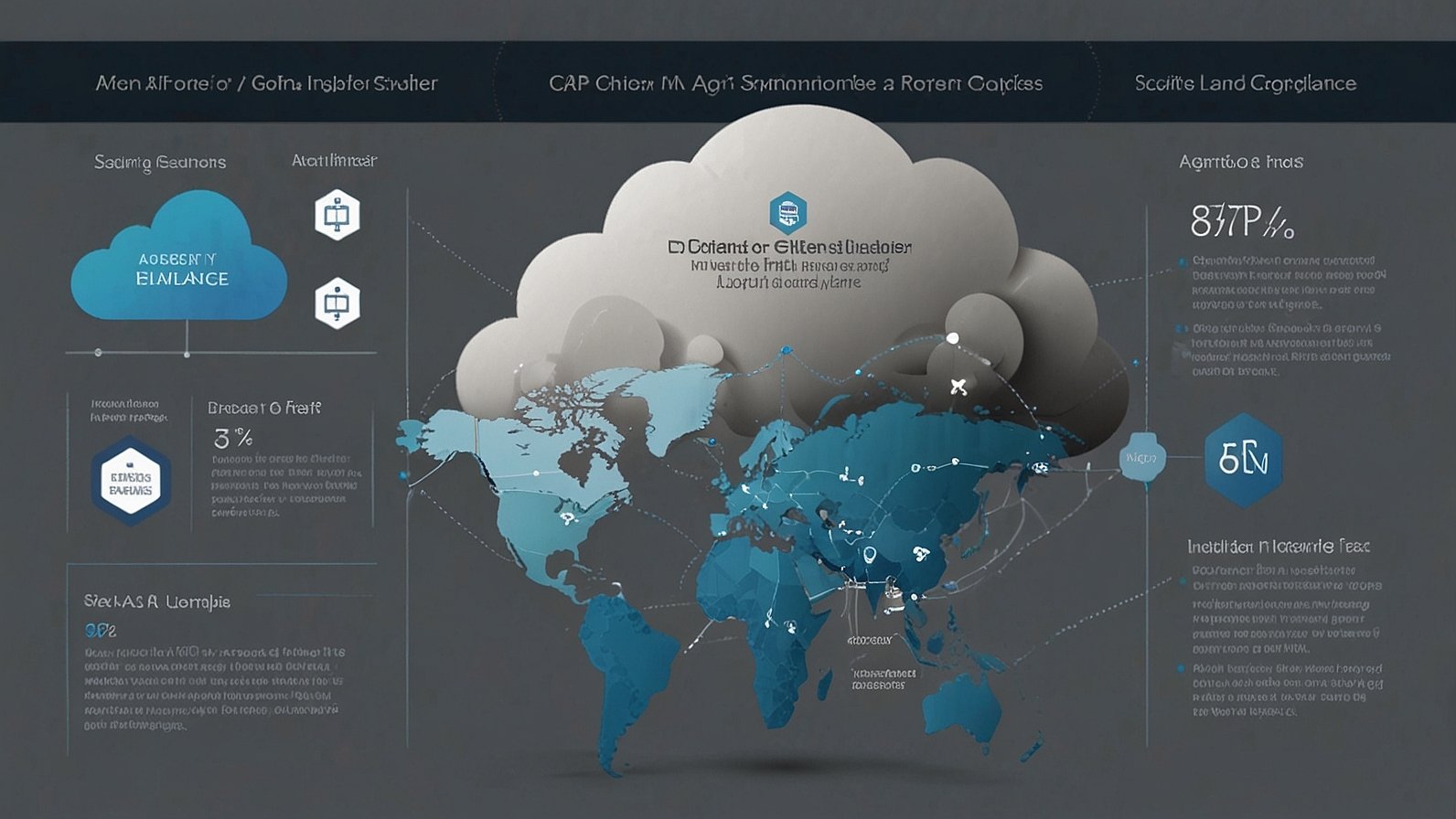Ever stared at a cyber insurance application and felt a cold sweat? You’re not alone. In today’s threat landscape, insurers aren’t just asking if you have security—they’re demanding proof of specific, robust controls, especially around identity. It’s no longer a simple checkbox; it’s a deep dive into your defenses. And right at the heart of this scrutiny is one non-negotiable requirement: comprehensive Multi-Factor Authentication (MFA).
This is where the challenge—and the opportunity—lies. How do you extend MFA to every critical system, especially those legacy and cloud platforms that traditional agents can’t reach? The answer could be the key to not just getting covered, but getting better terms. Let’s explore how an identity-protection platform like Silverfort is becoming the secret weapon for businesses navigating the complex world of cyber insurance coverage.
Why Insurers Are Obsessed with Your MFA Gaps
Think of a cyber insurer as a meticulous home inspector. They’re not just looking to see if you have a lock on your front door; they’re checking every window, the basement, and the old shed out back. They know that attackers don’t target your strongest point; they exploit the weakest one.
For years, that weak point has been stolen credentials. A single password is all it takes for a ransomware attack to begin. To mitigate this risk, insurers have drastically expanded their MFA requirements. They now expect it everywhere:
- Cloud applications (Office 365, Salesforce, AWS)
- On-premises systems (Windows AD, file servers, VPNs)
- Legacy and custom applications that can’t support modern agents
- Privileged or “shadow” administrative accounts often overlooked
Failing to demonstrate MFA across these areas creates a major compliance gap that can lead to application denial, sky-high premiums, or costly exceptions in your policy.
How Silverfort Bridges the Cyber Insurance Coverage Gap
So, how do you prove to an insurer that your entire digital estate is locked down? This is the problem Silverfort was built to solve. Unlike traditional, agent-based MFA solutions, Silverfort uses a unique agentless approach. It’s like installing a security camera system that covers your entire property without needing to rewire every building.
Here’s how it directly addresses insurer concerns:
- Agentless MFA for Every System: Silverfort can enforce MFA on systems that were previously “unprotectable,” like legacy applications, IT infrastructure, and file shares. This eliminates the excuses and closes the gaps insurers hate to see.
- Unmatched Visibility: The platform provides a complete map of all user access, including those powerful and often hidden shadow admin accounts. You can’t protect what you can’t see, and Silverfort gives you—and your insurer—full visibility.
- Adaptive Authentication: It uses AI to assess risk in real-time. Is a user logging in from a new country at 2 AM? Step-up authentication triggers automatically. This smart approach satisfies insurers’ demands for dynamic security without burdening employees with constant MFA prompts.
| Insurer’s Requirement | Traditional MFA Challenge | How Silverfort Addresses It |
|---|---|---|
| MFA on all remote access | Easy for VPN, hard for other methods | Enforces MFA on any remote access path, agentlessly |
| MFA for admin accounts | Admins often bypass MFA for convenience | Applies non-bypassable MFA to privileged access |
| MFA on cloud platforms | Usually covered, but may have gaps | Provides a unified layer across all cloud and on-prem apps |
| Visibility into user auth | Logs are siloed and hard to aggregate | Centralized dashboard shows all authentication attempts |
Real-World Impact: Beyond the Checklist
Implementing Silverfort isn’t just about ticking boxes. It’s about materially strengthening your security posture, which is what insurers truly care about. For instance, a major healthcare provider was struggling to meet their carrier’s demands for MFA on critical medical systems. By deploying Silverfort, they were able to enforce MFA without disrupting sensitive medical equipment, confidently passed their insurer’s audit, and secured a policy with terms that reflected their improved security.
While no vendor can guarantee lower premiums, demonstrating this level of control shifts the narrative. You’re no longer a risky bet; you’re a responsible organization that has proactively addressed its largest identity-related vulnerabilities.
3 Actionable Steps to Strengthen Your Insurance Application Tomorrow
Ready to improve your position? Here’s how to start:
- Conduct an Identity Audit: Use Silverfort’s visibility tools to discover all your critical access paths, privileged accounts, and legacy systems. You can’t protect what you don’t know about.
- Map Gaps to Requirements: Compare your current MFA coverage against a typical insurer’s checklist (readily available from most major carriers). Identify your biggest areas of exposure.
- Prioritize and Protect: Start with your crown jewels—domain admin accounts, cloud consoles, and critical data repositories. Use Silverfort’s agentless technology to deploy MFA there first, creating a powerful demonstration of control for your next application or renewal.
Navigating cyber insurance doesn’t have to be a nightmare. By leveraging modern identity protection platforms, you can close the gaps, satisfy the auditors, and finally secure the coverage your business needs.
What’s been the biggest hurdle in your own cyber insurance journey?
You May Also Read: Tractor Supply Sales Associate Job Description Explained
FAQs
Does implementing Silverfort guarantee I’ll get cyber insurance?
No single tool guarantees insurance approval. However, Silverfort directly addresses the top identity and MFA requirements that insurers look for, significantly strengthening your application and improving your chances of favorable terms.
My insurer is asking about MFA on legacy systems. Can Silverfort help?
Absolutely. This is one of Silverfort’s core strengths. Its agentless architecture allows it to enforce MFA on legacy systems, on-premises applications, and IT infrastructure that cannot support traditional agent-based MFA.
We already have MFA for Office 365. Is that enough?
Probably not. Most insurers now require MFA for all remote access, privileged accounts, and access to critical data. This often includes on-premises file shares, legacy databases, and command-line tools that Office 365 MFA does not cover.
How does Silverfort handle privileged or “shadow” admin accounts?
Silverfort discovers these accounts and applies non-bypassable MFA to their access, ensuring that even the most powerful credentials are protected by a second factor. This is a key item on insurer checklists.
Is the deployment of Silverfort complex and disruptive?
A key benefit of its agentless approach is a simplified deployment. Since you don’t need to install software on every endpoint or server, the rollout is typically faster and less disruptive than traditional methods.
Can Silverfort help with more than just cyber insurance?
Yes. While it excels at closing insurance compliance gaps, the primary benefit is a massive improvement in your overall security posture, preventing breaches stemming from compromised credentials across your entire hybrid environment.
Does Silverfort only provide MFA?
No, it offers a full suite of identity protection services, including Adaptive Authentication (risk-based policies), Identity Threat Detection, and lateral movement protection, all of which contribute to a stronger security story for insurers.











